Humanity has spent hundreds of years honing lots of different types of coffee drinks.
This evolution began on the Arabian Peninsula in the 15th century and then expanded to the European continent in the 17th century.
The latter twist of fate is, of course, what allowed Italian coffee-making maestros to invent the enticing names for many of the popular coffee drinks enjoyed today!
Hollywood icon Jackie Chan once mused insightfully, “Coffee is a language in itself.” Indeed, when it comes to exploring the diversity of exquisite flavors on offer in our favorite cafés and holiday destinations, there is a broad vocabulary to master.
Understanding how to describe the various types of coffee drinks correctly opens exciting avenues toward new taste experiences, so today we will take a deep dive into the various coffee drink types and what makes them unique from one another. Read on to discover new and unexpected favorites.
Taking a Tour of Coffee Terminology
When it comes to creating a cup of coffee that is just right, there are truly no lengths that coffee drinkers won’t go to. With that in mind, it’s no surprise that many coffee drink types are distinct thanks to only the smallest of details.
To help you navigate this phenomenal landscape of coffee lingo, we have grouped the types of coffee drinks loosely, adventuring sequentially into the territory of short and black coffees, long and black coffees, short and milky coffees, and long and milky coffees—before finally delving into the realm of dessert coffees, alcoholic coffees, cold-served coffees, and cutting-edge coffees. It’s going to be quite a ride, so do grab your coffee stirrer and strap in!
Espresso
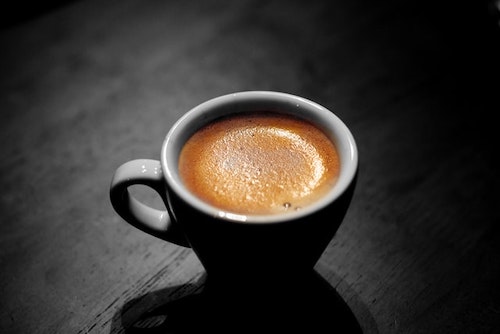
Ah, the humble espresso—a shot of alertness that fires up brain cells in mere moments. This internationally beloved coffee drink is highly concentrated and small in size; most commonly around 30ml per serving.
To create it, an espresso machine forces high-pressure steam through ground coffee beans. What emerges is a powerful dose of black coffee that can be enjoyed alone or with sugar, or used as the base for many of the other types of coffee drinks on our list.
Doppio
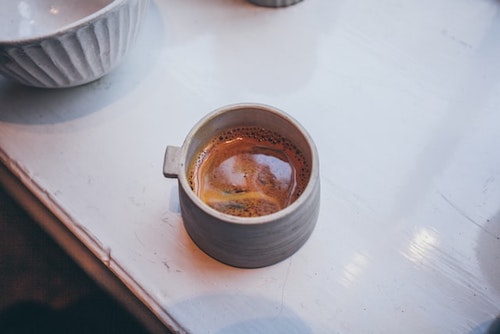
The term doppio, simply put, is a double shot of espresso, with equal strength but twice the volume—usually at around 60ml per serving.
In some coffee houses, this may be described as a double espresso, but the Italian name does have a charming ring to it, don’t you think?
Ristretto
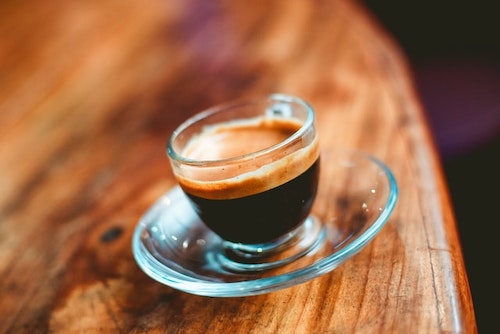
If you like your coffee to really pack a punch, there can be no better option than the ristretto, which can be viewed as espresso on overdrive! This feisty beverage is created similarly to espresso, but with a ratio of half the water to coffee.
The result is a short drink with a slightly different and stronger flavor that can be sweetened to taste if preferred.
Lungo
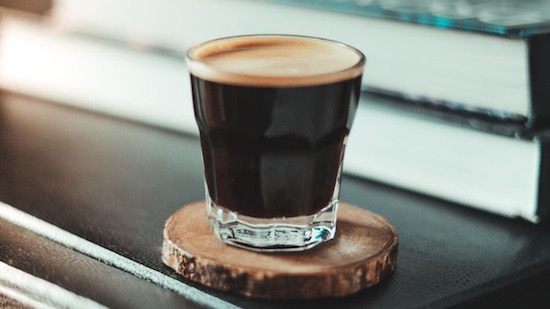
The Italian word lungo means long, and this is indeed a longer espresso. The process of its creation is very much the same as that of espresso but the coffee is drawn for longer, creating a 60ml beverage with half the strength of an espresso.
This style of extraction can create a slightly more bitter flavor and will result in less crema.
Ristretto, Espresso, and Lungo: What’s the Difference
Americano
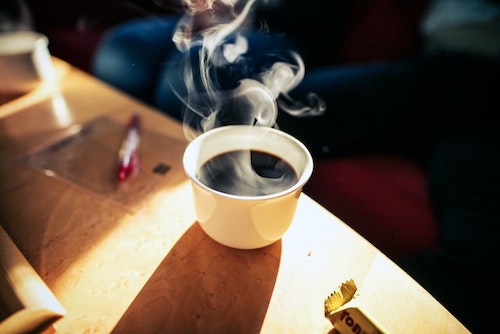
Moving on to the longer black coffee beverages, we begin with what is perhaps one of the most beloved coffee styles in the Western world; the mighty americano. This is often the go-to coffee of choice for those who frequent American-style coffee houses, from where vast vat-like cups can be carried proudly to the office, ready to supercharge the drinker’s day.
The name of the americano is believed to have originated in the Second World War when Italians observed U.S. soldiers diluting their espresso to make it go further.
To create an americano, a shot of espresso should be poured into a large cup before it is filled with hot water.
Long Black
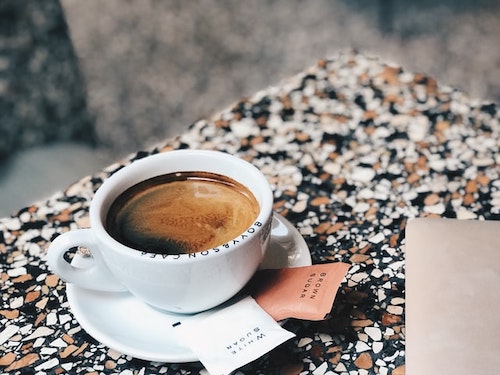
Fascinatingly, when the order of the americano’s preparation is reversed—with the espresso poured over hot water—this is known as a long black.
This variation is popular in Australia and New Zealand.
Macchiato
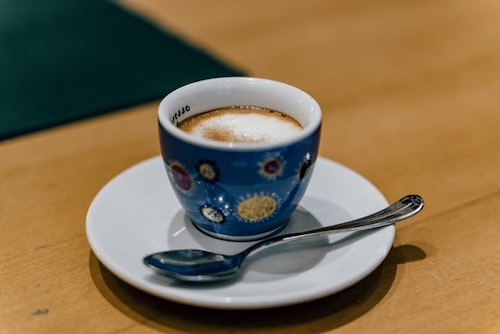
It may well have crossed your mind that milk could be added to many of the drinks above. What you might not have realized is that in doing so, we often transform the coffee in question into another coffee type entirely!
Among such examples is the macchiato, which is an espresso served with just a dash of steamed milk—somewhere in the realm of a teaspoon or two.
Long Macchiato
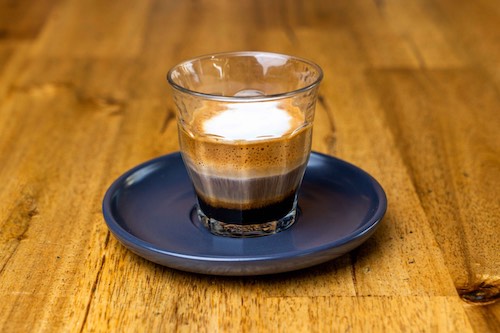
While the long macchiato may be longer, it still remains a short drink by most coffee drinkers’ standards.
In this instance, a bit more steamed milk is added atop the espresso—perhaps three or four teaspoons—in order to provide a milkier flavor.
This coffee type is often served in a clear cup so that the distinctive color difference between the coffee and the milk can be seen.
Cortado
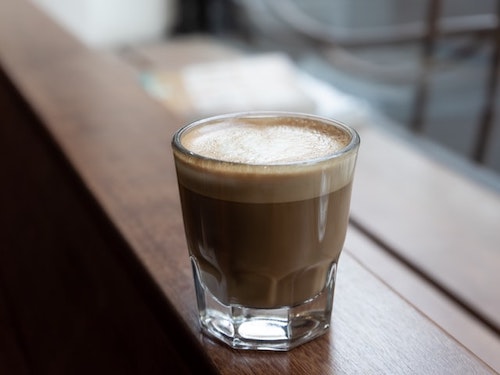
Popular in many Spanish and Portuguese-speaking countries, the cortado is similar to the macchiato but not quite the same. To the espresso base, roughly 30ml of steamed milk is added.
However, it is important to note that in the cortado’s truest form, there will be a complete absence of foam. In North America, this coffee type is sometimes known as a Gibraltar.
Piccolo Latte
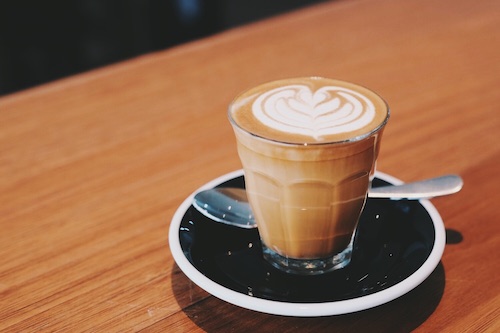
Absolutely as charming as it sounds, the piccolo latte is a small but powerful cousin of the conventional latte.
To make it, a ristretto shot is topped with around 60ml of steamed milk, creating a flavor that is both richly milky and invigoratingly strong.
Cappuccino
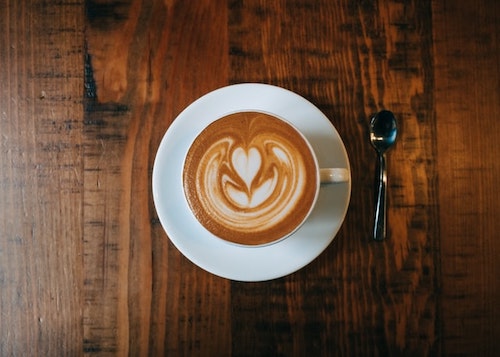
Allowing our eyes to move towards the larger cups on the barista’s counter, we discover the comfortingly large and enticing cappuccino.
While popular as a breakfast drink in Italy, the cappuccino is enjoyed at all hours of the day elsewhere and serves as the perfect choice when meeting with friends.
Its creation calls for one or two shots of espresso, with the rest of the cup filled with steamed milk and foamed milk in equal measure. The masterpiece is completed with a sprinkle of indulgent chocolate powder.
Latte
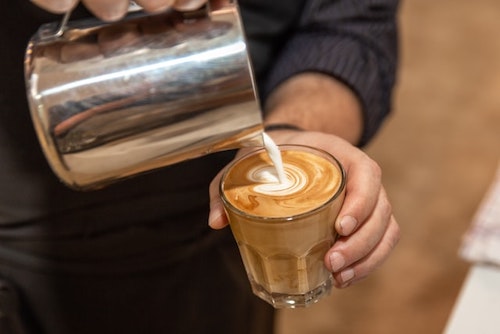
Another favorite among popular coffee drinks, the latte is a universally palatte-friendly coffee option for those who sadly find the strength and acidity of coffee disenchanting.
Lattes are usually served in a latte glass or tall mug, and call for a single shot of espresso, followed by steamed milk to the receptacle’s brim, with a thin layer of milk foam on the top.
Flat White
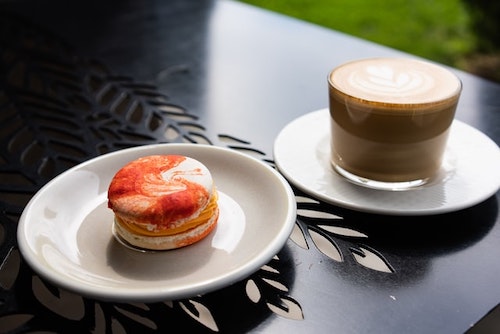
For those who have always wondered what distinguishes a flat white, a clear definition awaits!
This particular coffee style once again originates in Australia and New Zealand, although you will certainly hear its name elsewhere in the world.
What sets the flat white apart from similar coffee drink types is that steamed milk is poured over one or two shots of espresso without any foam, usually in a slightly smaller cup than this beverage’s long Italian-style cousins.
Latte Macchiato
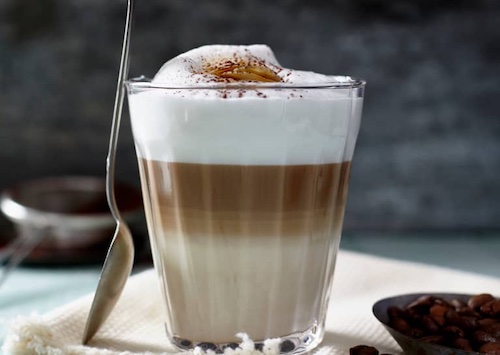
Having touched upon the idea that the order of pouring is key for many types of coffee drinks, we come to a great example in the latte macchiato.
This coffee requires that a cup of steamed milk is prepared first and then a shot of espresso poured over the top.
When served in a glass cup, this creates the unusual appearance of a coffee that is darker at the top and lighter at the bottom.
Cafe Breve
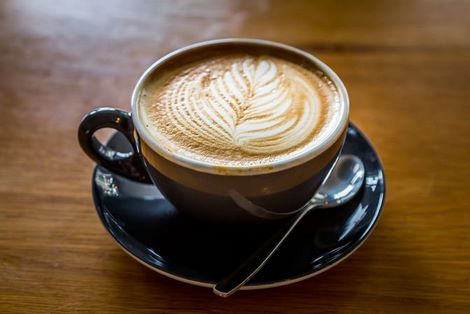
If you love the idea of all of these gloriously long coffee drinks but wish that they could offer a greater intensity of coffee flavor, then the cafe breve is for you.
To make it, rather than steaming milk alone, the barista—or home coffee enthusiast—will steam a half-and-half mixture of milk and coffee, and then pour this over a shot of espresso.
The result is a decadently dark longer drink with rich caramel-colored foam.
Cafe au Lait
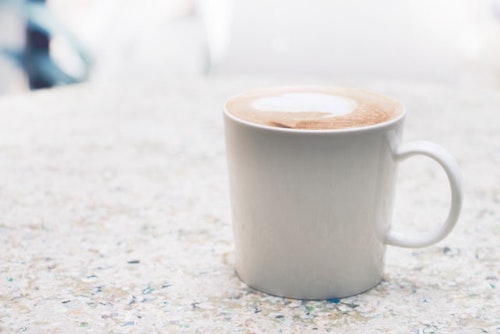
Hailing from France, the cafe au lait—at least in the minds of purists—is made using coffee from a French press rather than espresso. To complete the cup, scalded milk that has been heated from below is used rather than steamed milk.
Of course, today many coffee houses will serve a cafe au lait using espresso and foam-less steamed milk, but from here on out, you’ll know the difference!
Mocha
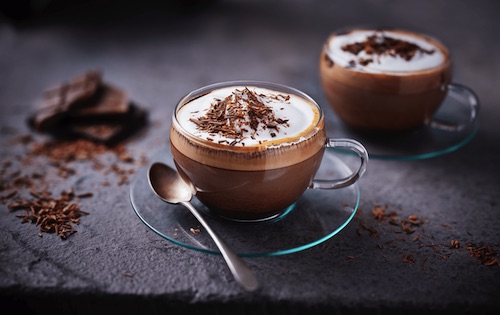
Denoting the definition of indulgence within the coffee-drinking work, the mocha combines the two similarly intense flavors of coffee and chocolate to create something that will certainly stimulate the taste buds.
The way that mocha is made varies widely, but its principal ingredients are espresso, chocolate or cocoa, and steamed milk with foam. Sometimes, for an even sweeter treat, whipped cream is added too.
Marocchino
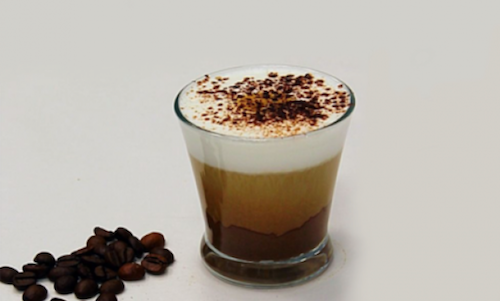
Sticking with the theme of coffee and chocolate, we next take a moment to enjoy the marocchino.
Many consider this sweet coffee beverage to be the predecessor of the contemporary mocha, and its origins can be traced to World War II. As you will discover, the manifestation of this masterpiece is an art in itself.
First, a layer of cocoa powder is dusted atop a shot of espresso, then a layer of milk froth is added on top of that, and finally a second later of sprinkled cocoa powder marks completion.
Vienna
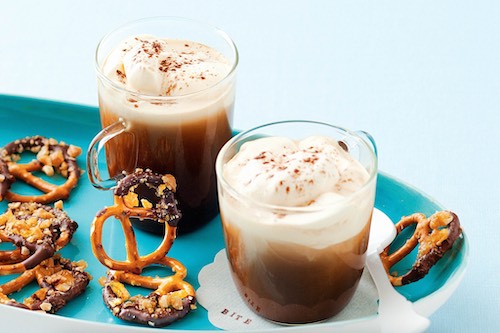
Speaking of sweetness, sometimes the only thing that will do is a melding of opposites—the deep bitterness of coffee and the fluffy sweetness of whipped cream!
The vienna is often used as a canvas for creativity, with numerous variations popping up, but in its most essential form, this coffee type is simply rich and fragrant espresso generously topped with whipped cream.
Affogato
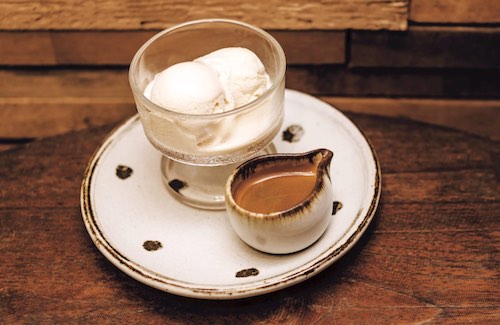
The affogato can be seen as serving as the bridge between a coffee beverage and a caffeinated dessert. Its creation is simple, with a scoop of ice cream—usually vanilla—topped with a shot of espresso. A perfect treat for a hot day!
Irish Coffee
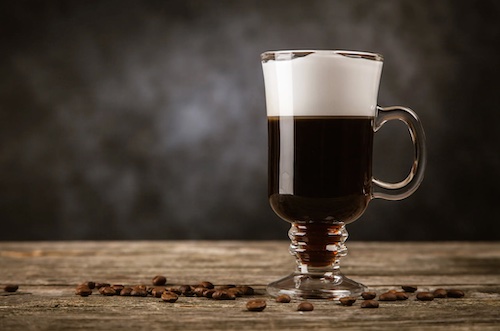
At times, the mind-altering effects of caffeine simply aren’t enough and the temptation arises to make coffee a decidedly alcoholic affair.
The most iconic form of this adult indulgence is the Irish coffee, created with a combination of espresso or strong brewed coffee, brown sugar, a shot of whiskey, and cream.
To accommodate different tastes, variants have grown in popularity, such as those using brandy or whiskey-cream liqueurs like Baileys.
Corretto
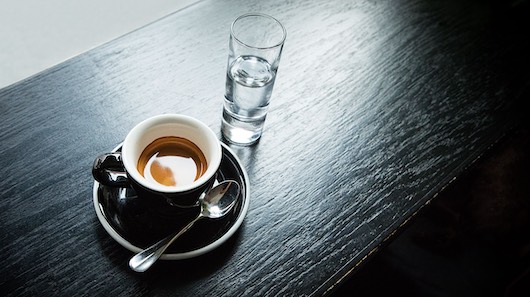
In a charming addition to our Italian-origin selection among the most popular types of coffee, we discover the caffè correto, which gives the humble espresso just a hint of naughtiness by adding a splash of grappa—an Italian style of liqueur.
The charm arises in the name, which translates simply as “corrected”, and while it is fair to say that a little alcohol can balance the bitterness of coffee, the name remains rather entertaining!
In Portugal, a similar preparation also offers amusement thanks to its name. When a splash of liqueur is added to espresso there, it is known as café com cherinho, which means “coffee with a scent”.
Iced Coffee
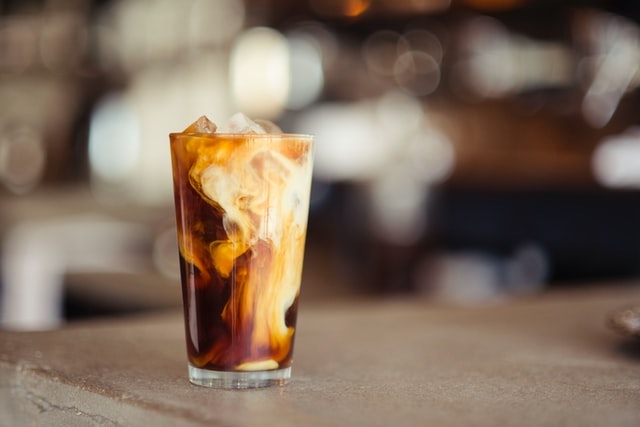
When the sun makes an appearance and the thermostat begins to rise, you might well find yourself reaching for an iced coffee. But what exactly does this beverage involve?
Well, as a relatively contemporary concept, the term iced coffee covers a broad range of coffee types.
The only essential criteria is that the complete coffee concoction is prepared hot and then poured over ice to cool it.
This coffee type is often prepared with sweet flavored syrups and added whipped cream. It is not to be confused with the frappe, which is traditionally made cold with instant coffee and ice.
Iced Latte
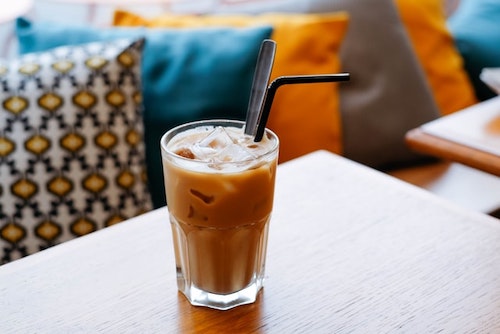
In contrast to an iced coffee, the iced latte is created by pouring a shot of espresso over ice and then adding cold milk to fill the glass.
At times, the milk may be foamed and then cooled to create a similar texture to a hot latte, however, it is the coldness of the milk that distinguishes this beverage.
Cold Brew
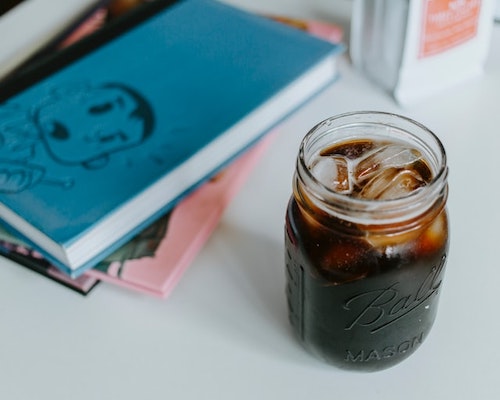
While cold brew coffee can be seen as a distinct style of preparing the coffee itself—akin to drip-made or percolator-made coffee—it is also a coffee type that you may encounter on a contemporary bistro’s menu.
When cold brew coffee is made, heat isn’t used at all, but rather coffee grounds are steeped in or drip-fed with cold water over an extended period of time. The result is a coffee that is not only ready-chilled but also sweeter and less bitter than a conventional not brew.
If you really do like to frequent avant-garde coffee counters, you may come across so-called nitro coffee, which is created by infusing cold brew coffee with nitrogen to make it foamy. Positively futuristic!
Bulletproof Coffee
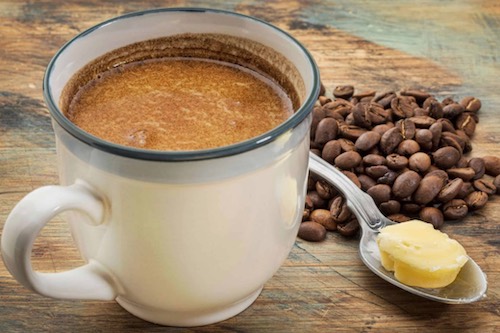
Intriguingly, bulletproof coffee was originally inspired by the practice of mixing yak butter into tea drinks in Tibet.
However in this far more modern concoction, coffee is blended with unsalted butter and a medium chain triglyceride oil—often derived from coconuts—to create a calorie-dense breakfast beverage.
This coffee style is particularly popular among fans of the ketogenic diet.
So there you have it. Having stuck with us throughout this magical and meandering exploration of the many types of coffee drinks, which one do you feel inspired to try next?
If you think that we missed something crucial, we’d love to hear from you. In the meanwhile, happy coffee drinking!

Hey there! I’m Austin and I love coffee. In fact, I drink about 5 americanos a day. I started BrewingCoffees because I wanted to share my love of coffee with the world. Before starting BrewingCoffees, I worked as a Barista for 7 years.
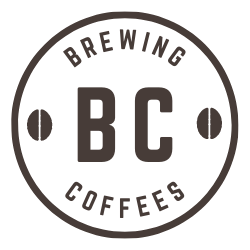
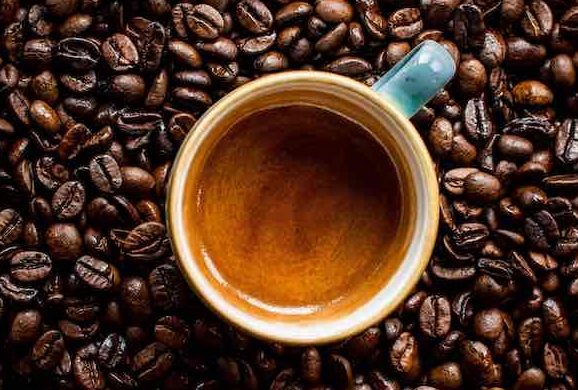
Leave a Reply